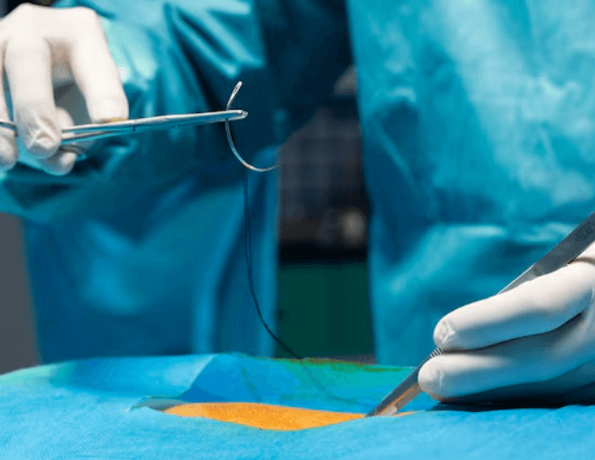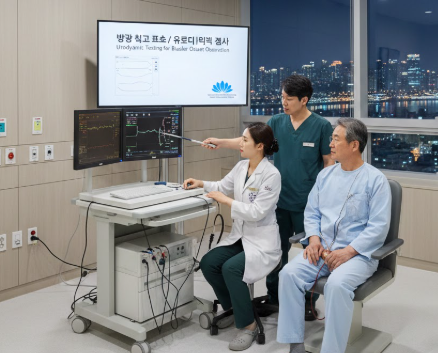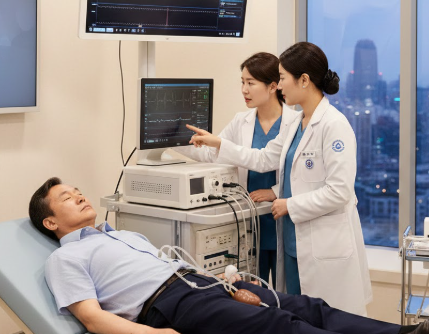Treatment Overview
The Microsurgical Laparoscopic Ovarian Cyst Removal Program in Korea represents the pinnacle of precision gynecologic surgery. This innovative approach integrates advanced laparoscopic visualization with microsurgical techniques to remove ovarian cysts delicately, preserving ovarian function and fertility. Korean hospitals have become global leaders in reproductive-preserving gynecologic surgeries due to their focus on minimally invasive and tissue-sparing methods.
Ovarian cysts—fluid-filled sacs or solid growths on the ovaries—can cause pain, hormonal imbalance, or infertility if untreated. While many resolve naturally, persistent or complex cysts often require surgical removal. Microsurgical laparoscopic ovarian cyst removal allows surgeons to excise cysts precisely under magnified visualization while safeguarding the surrounding ovarian tissue and blood vessels.
Korea’s top-tier hospitals, such as Samsung Medical Center, Asan Medical Center, Severance Hospital, CHA Bundang Women’s Hospital, and Ewha Womans University Medical Center, have integrated state-of-the-art microsurgical systems into their laparoscopic operating suites, combining global surgical excellence with advanced reproductive care.
Purpose & Benefits
The primary goal of microsurgical laparoscopic ovarian cyst removal is to achieve complete cyst excision with minimal trauma, preserving ovarian tissue and fertility potential. This technique is particularly beneficial for women who wish to maintain or enhance their reproductive health.
Key benefits include:
- Tissue Preservation: Microsurgical precision minimizes ovarian tissue loss.
- Fertility Protection: Retains healthy ovarian tissue, supporting natural conception.
- Minimal Scarring: Laparoscopic access ensures tiny incisions and excellent cosmetic results.
- Reduced Bleeding: Microsurgical coagulation techniques minimize blood loss.
- Rapid Recovery: Most patients recover within 1–2 weeks.
- Lower Adhesion Risk: Microscopic precision reduces internal scarring, preserving pelvic health.
- Enhanced Diagnostic Accuracy: Real-time magnification helps distinguish cystic structures from normal tissue.
This advanced microsurgical approach has revolutionized ovarian surgery in Korea, offering unmatched precision and patient safety.
Ideal Candidates
Microsurgical laparoscopic ovarian cyst removal is ideal for women who require cyst excision but wish to minimize risk and protect fertility. Recommended candidates include:
- Women with persistent or recurrent ovarian cysts unresponsive to medication.
- Patients experiencing pelvic pain, irregular cycles, or hormonal imbalance due to cysts.
- Women with complex or large cysts identified through imaging.
- Patients with endometriotic cysts (endometriomas) requiring delicate excision.
- Women seeking fertility-preserving surgery.
Before surgery, Korean gynecologists conduct comprehensive assessments using high-resolution ultrasound, MRI, and hormone analysis to determine the optimal approach for each patient.
Possible Risks & Complications
While microsurgical laparoscopic ovarian cyst removal in Korea is extremely safe, some minor risks may occur:
- Mild bleeding or infection (rare due to minimally invasive methods).
- Adhesion formation, although minimized by microsurgical precision.
- Cyst recurrence, depending on underlying causes such as endometriosis or hormonal factors.
- Temporary discomfort at incision sites.
- Anesthesia-related risks, which are minimal under expert supervision.
Korean surgical centers are internationally accredited and adhere to strict patient safety standards, ensuring risk reduction through advanced techniques and postoperative care.
Techniques Used
Microsurgical laparoscopic ovarian cyst removal in Korea combines laparoscopy with microsurgical skill for ultimate precision. The main techniques include:
- High-Definition 3D Laparoscopy: Magnified visualization for superior detail.
- Microsurgical Instruments: Fine-tipped tools for meticulous dissection and tissue preservation.
- Ovarian Capsule Reconstruction: Repaired microscopically to restore natural anatomy.
- Low-Thermal Energy Devices: Used to minimize tissue damage during cauterization.
- Fertility-Sparing Protocols: Ensures maximum ovarian function post-surgery.
This technique is especially valuable for young women and those undergoing fertility treatments, as it reduces the risk of diminished ovarian reserve.
Recovery & Aftercare
Recovery after microsurgical laparoscopic ovarian cyst removal in Korea is typically quick and smooth. Most patients can walk within hours and return to routine activities in about a week.
Postoperative care typically includes:
- 1–2 days of hospital observation.
- Pain management with mild analgesics.
- Early ambulation to prevent complications.
- Follow-up imaging after 4–6 weeks.
- Hormonal or fertility counseling if needed.
Korean hospitals emphasize holistic recovery—combining medical precision with compassionate support and patient education to maintain long-term ovarian health.
Results & Longevity
Microsurgical laparoscopic ovarian cyst removal provides lasting results with minimal recurrence risk. Korean studies show high rates of ovarian function preservation and symptom relief after surgery.
Patients experience:
- Relief from pelvic pain or bloating.
- Restored hormonal balance.
- Maintained fertility and ovulation.
- Excellent cosmetic results due to small incisions.
When performed at leading Korean centers, this surgery ensures long-term ovarian health with minimal complications or recurrence.
Treatment Process in Korea
The treatment journey typically follows these steps:
- Initial Consultation: Comprehensive examination and imaging to evaluate cyst characteristics.
- Preoperative Preparation: Blood work, anesthesia consultation, and personalized surgery plan.
- Surgical Procedure: Microsurgical laparoscopic cyst excision under general anesthesia.
- Postoperative Monitoring: Observation and pain control for 24–48 hours.
- Discharge & Follow-Up: Review of pathology results, imaging, and lifestyle guidance.
The process is patient-centered, streamlined, and designed for optimal comfort and efficiency.
Cost Range
The cost of microsurgical laparoscopic ovarian cyst removal in Korea depends on hospital type and cyst complexity:
- Standard Laparoscopic Cyst Removal: ₩4,000,000 – ₩6,000,000 KRW ($3,000 – $4,500 USD)
- Microsurgical Laparoscopic Cyst Removal: ₩7,000,000 – ₩10,000,000 KRW ($5,300 – $7,500 USD)
These prices reflect Korea’s advanced technology, high surgical success rates, and international medical standards.
Popular Clinics for Microsurgical Laparoscopic Ovarian Cyst Removal in Korea
- Samsung Medical Center – Pioneers in microsurgical ovarian preservation.
- Asan Medical Center – Renowned for advanced reproductive microsurgery.
- Severance Hospital (Yonsei University) – Offers leading-edge laparoscopic gynecology.
- CHA Bundang Women’s Hospital – Specializes in fertility-preserving cyst removal.
- Ewha Womans University Mokdong Hospital – Combines innovation with personalized care.




